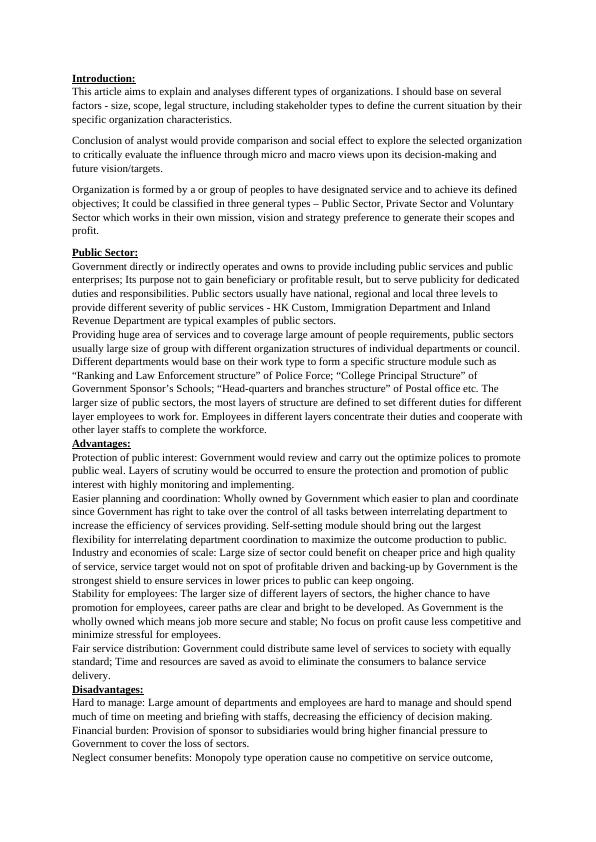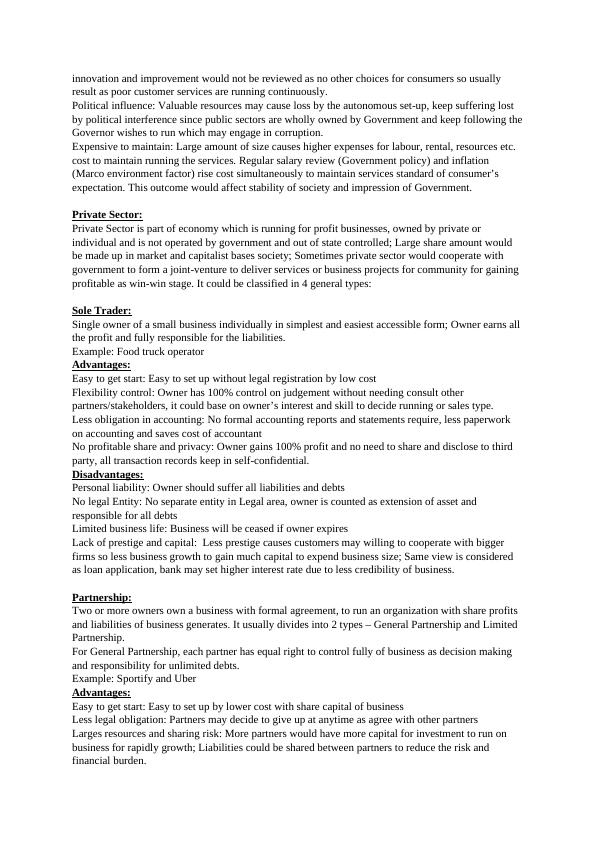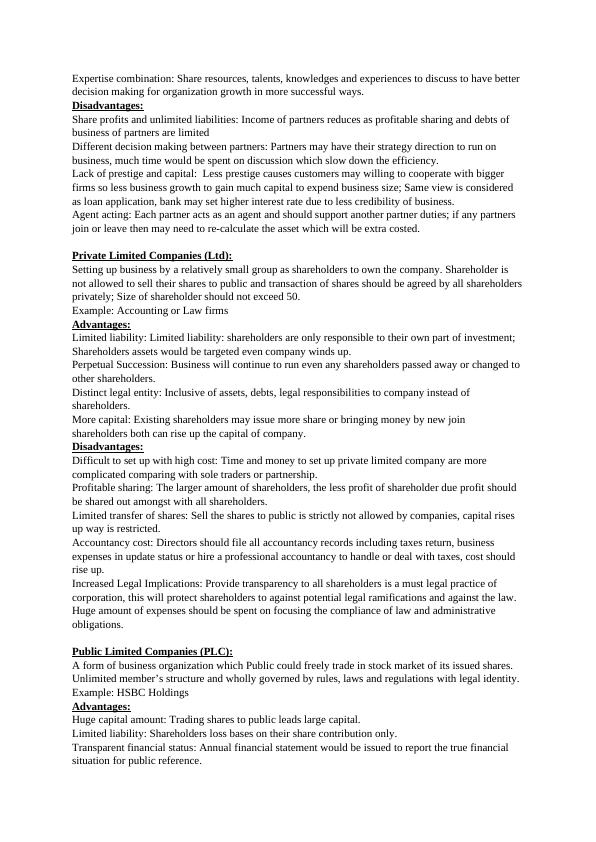Ask a question from expert
Organizational Analysis - Overview, Characteristics, Models
16 Pages6047 Words36 Views
Added on 2021-01-11
Organizational Analysis - Overview, Characteristics, Models
Added on 2021-01-11
BookmarkShareRelated Documents
Introduction:This article aims to explain and analyses different types of organizations. I should base on several factors - size, scope, legal structure, including stakeholder types to define the current situation by theirspecific organization characteristics.Conclusion of analyst would provide comparison and social effect to explore the selected organizationto critically evaluate the influence through micro and macro views upon its decision-making and future vision/targets.Organization is formed by a or group of peoples to have designated service and to achieve its defined objectives; It could be classified in three general types – Public Sector, Private Sector and Voluntary Sector which works in their own mission, vision and strategy preference to generate their scopes and profit.Public Sector:Government directly or indirectly operates and owns to provide including public services and public enterprises; Its purpose not to gain beneficiary or profitable result, but to serve publicity for dedicated duties and responsibilities. Public sectors usually have national, regional and local three levels to provide different severity of public services - HK Custom, Immigration Department and Inland Revenue Department are typical examples of public sectors.Providing huge area of services and to coverage large amount of people requirements, public sectors usually large size of group with different organization structures of individual departments or council. Different departments would base on their work type to form a specific structure module such as “Ranking and Law Enforcement structure” of Police Force; “College Principal Structure” of Government Sponsor’s Schools; “Head-quarters and branches structure” of Postal office etc. The larger size of public sectors, the most layers of structure are defined to set different duties for differentlayer employees to work for. Employees in different layers concentrate their duties and cooperate withother layer staffs to complete the workforce.Advantages:Protection of public interest: Government would review and carry out the optimize polices to promotepublic weal. Layers of scrutiny would be occurred to ensure the protection and promotion of public interest with highly monitoring and implementing.Easier planning and coordination: Wholly owned by Government which easier to plan and coordinate since Government has right to take over the control of all tasks between interrelating department to increase the efficiency of services providing. Self-setting module should bring out the largest flexibility for interrelating department coordination to maximize the outcome production to public.Industry and economies of scale: Large size of sector could benefit on cheaper price and high quality of service, service target would not on spot of profitable driven and backing-up by Government is the strongest shield to ensure services in lower prices to public can keep ongoing. Stability for employees: The larger size of different layers of sectors, the higher chance to have promotion for employees, career paths are clear and bright to be developed. As Government is the wholly owned which means job more secure and stable; No focus on profit cause less competitive andminimize stressful for employees.Fair service distribution: Government could distribute same level of services to society with equally standard; Time and resources are saved as avoid to eliminate the consumers to balance service delivery.Disadvantages:Hard to manage: Large amount of departments and employees are hard to manage and should spend much of time on meeting and briefing with staffs, decreasing the efficiency of decision making.Financial burden: Provision of sponsor to subsidiaries would bring higher financial pressure to Government to cover the loss of sectors.Neglect consumer benefits: Monopoly type operation cause no competitive on service outcome,

innovation and improvement would not be reviewed as no other choices for consumers so usually result as poor customer services are running continuously.Political influence: Valuable resources may cause loss by the autonomous set-up, keep suffering lost by political interference since public sectors are wholly owned by Government and keep following theGovernor wishes to run which may engage in corruption.Expensive to maintain: Large amount of size causes higher expenses for labour, rental, resources etc. cost to maintain running the services. Regular salary review (Government policy) and inflation (Marco environment factor) rise cost simultaneously to maintain services standard of consumer’s expectation. This outcome would affect stability of society and impression of Government.Private Sector:Private Sector is part of economy which is running for profit businesses, owned by private or individual and is not operated by government and out of state controlled; Large share amount would be made up in market and capitalist bases society; Sometimes private sector would cooperate with government to form a joint-venture to deliver services or business projects for community for gaining profitable as win-win stage. It could be classified in 4 general types:Sole Trader:Single owner of a small business individually in simplest and easiest accessible form; Owner earns allthe profit and fully responsible for the liabilities.Example: Food truck operatorAdvantages:Easy to get start: Easy to set up without legal registration by low costFlexibility control: Owner has 100% control on judgement without needing consult other partners/stakeholders, it could base on owner’s interest and skill to decide running or sales type.Less obligation in accounting: No formal accounting reports and statements require, less paperwork on accounting and saves cost of accountantNo profitable share and privacy: Owner gains 100% profit and no need to share and disclose to third party, all transaction records keep in self-confidential.Disadvantages:Personal liability: Owner should suffer all liabilities and debtsNo legal Entity: No separate entity in Legal area, owner is counted as extension of asset and responsible for all debtsLimited business life: Business will be ceased if owner expiresLack of prestige and capital: Less prestige causes customers may willing to cooperate with bigger firms so less business growth to gain much capital to expend business size; Same view is considered as loan application, bank may set higher interest rate due to less credibility of business.Partnership:Two or more owners own a business with formal agreement, to run an organization with share profits and liabilities of business generates. It usually divides into 2 types – General Partnership and Limited Partnership.For General Partnership, each partner has equal right to control fully of business as decision making and responsibility for unlimited debts.Example: Sportify and UberAdvantages:Easy to get start: Easy to set up by lower cost with share capital of businessLess legal obligation: Partners may decide to give up at anytime as agree with other partnersLarges resources and sharing risk: More partners would have more capital for investment to run on business for rapidly growth; Liabilities could be shared between partners to reduce the risk and financial burden.

Expertise combination: Share resources, talents, knowledges and experiences to discuss to have better decision making for organization growth in more successful ways.Disadvantages:Share profits and unlimited liabilities: Income of partners reduces as profitable sharing and debts of business of partners are limitedDifferent decision making between partners: Partners may have their strategy direction to run on business, much time would be spent on discussion which slow down the efficiency.Lack of prestige and capital: Less prestige causes customers may willing to cooperate with bigger firms so less business growth to gain much capital to expend business size; Same view is considered as loan application, bank may set higher interest rate due to less credibility of business.Agent acting: Each partner acts as an agent and should support another partner duties; if any partners join or leave then may need to re-calculate the asset which will be extra costed.Private Limited Companies (Ltd):Setting up business by a relatively small group as shareholders to own the company. Shareholder is not allowed to sell their shares to public and transaction of shares should be agreed by all shareholdersprivately; Size of shareholder should not exceed 50.Example: Accounting or Law firmsAdvantages:Limited liability: Limited liability: shareholders are only responsible to their own part of investment; Shareholders assets would be targeted even company winds up.Perpetual Succession: Business will continue to run even any shareholders passed away or changed to other shareholders.Distinct legal entity: Inclusive of assets, debts, legal responsibilities to company instead of shareholders.More capital: Existing shareholders may issue more share or bringing money by new join shareholders both can rise up the capital of company.Disadvantages:Difficult to set up with high cost: Time and money to set up private limited company are more complicated comparing with sole traders or partnership.Profitable sharing: The larger amount of shareholders, the less profit of shareholder due profit should be shared out amongst with all shareholders.Limited transfer of shares: Sell the shares to public is strictly not allowed by companies, capital rises up way is restricted.Accountancy cost: Directors should file all accountancy records including taxes return, business expenses in update status or hire a professional accountancy to handle or deal with taxes, cost should rise up.Increased Legal Implications: Provide transparency to all shareholders is a must legal practice of corporation, this will protect shareholders to against potential legal ramifications and against the law. Huge amount of expenses should be spent on focusing the compliance of law and administrative obligations.Public Limited Companies (PLC):A form of business organization which Public could freely trade in stock market of its issued shares. Unlimited member’s structure and wholly governed by rules, laws and regulations with legal identity. Example: HSBC HoldingsAdvantages:Huge capital amount: Trading shares to public leads large capital.Limited liability: Shareholders loss bases on their share contribution only.Transparent financial status: Annual financial statement would be issued to report the true financial situation for public reference.

Disadvantages:Hard to start up: Set up PLC should spend large costControl: If anyone buys enough amount of share in stock market, the control would be transferred to the largest shareholder’s hand.Slow decision making: Board of directors should attend many meetings to obtain the decision result which would be less efficient.Voluntary Sector:Nonprofit organization which produce social welfare with motivation, some organization will coordinate with government to deliver services of individual projects for serving community.Example: World-VisionAdvantages:Tax exemption: No need to pay taxes of nonprofit business.Enthusiastic employees: Staffs will give out much effort without asking equally rebate on their working, great outcome occurs.Liability protection: Employees are not responsible for liabilities of nonprofit organization. As equal, no personal asset of individual employees would be used but should direct to cooperate affairs.Disadvantages:Social trustee: It’s hard to have trustee by socials about your efforts to community, less agreement by socials may cause public scrutiny and short-life operation.Finance: Capital mainly comes from donation to maintain operation, if macro environment of economic is worse, less fund will be donated to keep running.Human Resources: Board member mainly formed by volunteers, it can’t be ensure a high quality of volunteers willing to join or complete the mission. Also, large amounts of employees are hard to be managed, less teamwork causes less efficient of outcome services delivery.Growth to international business environment:Different size of organization types would have individual solution for growing to the globalization business environment, typical methods are:Franchising: Localize companies can sell their product rights to other companies whereas overseas to expand their goods market to worldwide.Licensing: Goods owner companies collect the royalties to authorize other companies to use the intellectual property of their goods for further development and cooperation to increase company reputation.Joint Venture: Coordination with other companies to form a large organization to have large capital and resources to expand the size and reduce the risk.

End of preview
Want to access all the pages? Upload your documents or become a member.
Related Documents
Different Types, Size and Scope of an Organizationlg...
|16
|1757
|81
P1 Types of organization (Doc)lg...
|13
|3932
|35
Types of Organisations and their Size and Scopelg...
|19
|5742
|59
Types of Organisations and their Size and Scopelg...
|19
|5936
|32
Analysis Executive Summary of Different Types of Organisationlg...
|13
|3620
|194
Business and Business Environment: Types of Organizations, Organizational Functions, and Macro Environment Impactslg...
|17
|5028
|251